Heated ventilation in the apartment: types of heaters, especially their selection and installation
The ventilation system is the basis of a favorable microclimate both in the house and in the apartment. Full-fledged air exchange, at which regular replacement of stale exhaust air with fresh is carried out, contributes to the well-being of households and a decrease in the frequency of respiratory diseases.
However, the street air entering through the supply valve can significantly lower the temperature in the room and increase the cost of heating the home. In such cases, it is necessary to heat the supply ventilation in the apartment, due to which the temperature will not fall below the desired indicators.
In this material, we will consider the popular and ergonomic types of air heating systems for air inlets, determine the key characteristics of the heaters and talk about the appropriate stages of installation of the ventilation system, at which it is appropriate to install these units.
The content of the article:
The need for forced ventilation with heating
Fresh air ventilation is a proven way to ensure normal air exchange in the apartment. It is necessary to replace heavy stale air not only in the kitchen or in the bathroom: in all rooms where residents spend most of their time, care must be taken in advance to supply fresh air from the street.
According to the old standards adopted in Soviet times, for every person who is constantly in the living room, a minimum flow of 60 cubic meters is required. m of fresh air per hour. A similar indicator is relevant for a bedroom or children's room.
For a zone with a periodic stay of residents, for example, a living room, the minimum threshold for the amount of supply air is 30 cubic meters. m / h Modern European standards for the performance of the ventilation system are lower and offer 30 and 20 cubic meters.m / h per person for rooms with permanent and periodic stay, respectively.
However, even a reduced influx of fresh air from the street can significantly affect the temperature in the entire apartment. Cold air masses increase the load on the heating system, reducing its effectiveness. As a result, energy is wasted that is expended on heating the air cooled by the intake.
Additionally, staying in a room with a low air temperature can cause hypothermia and provoke the occurrence of certain diseases.
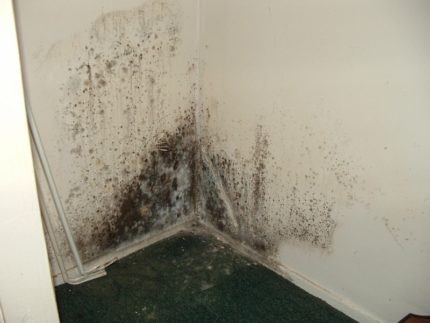
You can solve these problems with the help of an air heater, which is installed on the supply ventilation of the apartment. For the domestic climate, such a node in the ventilation system is an urgent need. With a noticeable decrease in temperature outside the window, an air-heating element will be the only effective way to prevent drafts and keep heat in the house.
The ventilation system with an air heater allows you to simultaneously compensate for heat loss and saturate the internal climate with the necessary volume of fresh air masses.
Ways to warm ventilation air
In fact, you can warm the incoming air from the outside using different methods:
- use of a recuperator;
- installation of a special heater or heat fan;
- application of the principle of recirculation.
These outdoor air heating systems are the most popular among users. Let's consider them in more detail.
A sufficiently effective mechanism for reducing heat loss is recovery heat in ventilation systems. The recuperator is a heat exchanger in which cold air from outside is heated due to the heat transfer of the air masses previously warmed up in the apartment, which are removed by the ventilation system itself. However, a significant disadvantage of structures with a recuperator is their high cost, which does not always pay off quickly by minimizing the cost of operating the supply ventilation system.
A heating element, built into the chain of units of the supply ventilation system, is no less reliable and effective way to heat cold street air. With this method, the flows are warmed up in the ventilation duct, passing through a thermal air heater, and enter the apartment, having the required temperature.
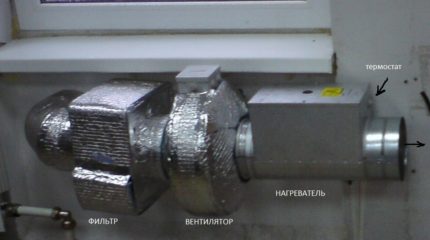
Supply ventilation with a heating element is usually cheaper in the installation, however, air heating itself requires more energy than the heat exchange process during recovery.
Air recirculation in many ways similar to recovery, in which the heating of the air masses occurs due to the heat of the exhaust air. However, if the air flows are not mixed during recuperation, recirculation involves the merging of the indoor air with the fresh outdoor air, which increases the temperature of the latter.
For integration into the apartment, the most convenient is the ventilation system with heated air intake using a separate heating unit. Such complexes are cheaper to install and often more compact.
The device and the operation of the supply ventilation
The design of the supply ventilation with heating of the air masses consists of several key links:
- At the entrance to the system there is an air intake grille that carries decorative and barrier functions, preventing large particles of dirt, insects, and dust from entering the system.
- The non-return valve controls the volume of air passing through, limiting its flow if necessary.
- Blocks with filters clean the air masses.
- A heater, recuperation or recirculation unit performs air heating.
- The fan directs the flow, contributing to the formation of the required level of traction, after which the air enters the apartment.
In addition to these elements, the system may have diffusers to help distribute air, silencers and fans.
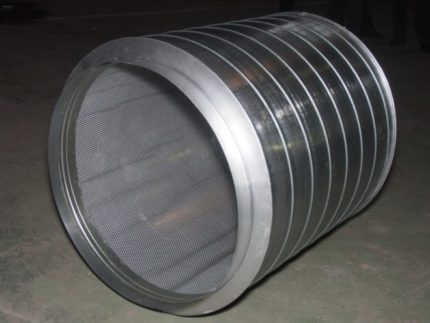
An integral part of the design is the channel insulation, due to which the system itself and the wall in which the hole for the intake and exhaust of air does not freeze.
In more detail, the device and the principle of arranging the supply ventilation we examined in next article.
Types of heaters for ventilation system
Two types of heaters-heaters can be built into the air heating system in the supply ventilation: water and electric. Consider their features in more detail.
View # 1 - water heater
A water heater is most often used in central ventilation and is interconnected with a heating system. Integration with the heating system saves energy, as the air is heated by the coolant.
The block is a radiator with tubes containing coolant. The surface of the pipeline itself has a ribbing, which increases the contact area of the heater with the air masses. Heat transfer occurs as follows: the heat carrier heats the tubes, which give the received heat to the fins. From the latter, direct heating of the air is carried out.
In more detail, the device and the principle of operation of the water heater we examined in this publication.
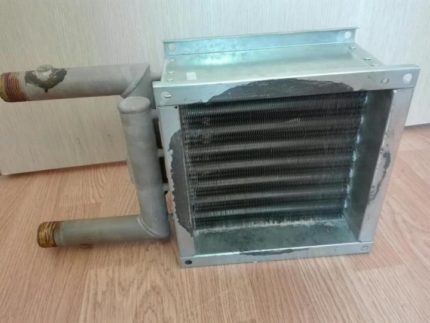
However, the installation of such a complex costs substantial funds and requires significant intervention in the room itself, after which repairs may well be required. Designing such ventilation systems must be done by specialists. In addition to these disadvantages, there is always the risk of freezing water in the heater with minimal radiator operation.
View # 2 - electric air heater
The electric air heater works from a network and is no less effective. Such a unit is slightly, but still increases energy consumption. However, the implementation of air heating using an electric heater is the most acceptable solution for a small apartment.
Like a water heater, an electric air heater can have fins to increase the area of contact with air.
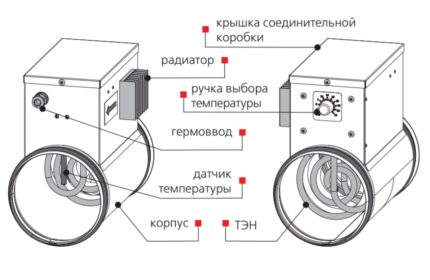
Additionally, electric and water heaters vary in shape. Depending on the configuration of the ventilation duct, they can be round, square or rectangular.
We wrote about the rules for calculating the power of a water and electric air heater in an article: Calorifer calculation: rules for calculating the power of water and electric units.
Heater integration into ventilation system
It is possible to qualitatively establish the necessary heating in the inlet at the stage of installation of the entire ventilation system, since disassembling a ready-made complex for the integration of a separate unit is a rather time-consuming process.And for the installation of a water heater, this procedure is almost impossible, since this unit must be connected with the heating system of the apartment.
To install an electric air heater in a ready-made typesetting and functioning ventilation system, it is necessary to disassemble the latter up to the unit with the fan inclusive.
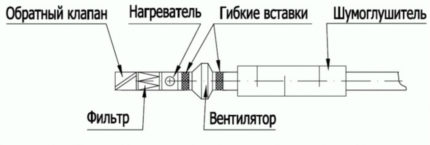
The heater is installed in front of the fan immediately after the filters.
This location is due to the fact that in winter the lubrication of bearings in radial fans is prone to thickening, which can provoke jamming of parts and overheating of the winding. The heating element eliminates the effects of the cold and prevents the breakdown of such an important unit.
Conclusions and useful video on the topic
The video below provides recommendations on choosing a forced-air ventilation with heating and discusses the key differences between a stacked ventilation system and a monoblock:
The author of the following video considers the advantages and disadvantages of the supply ventilation system and the breather popular among apartment owners:
Air exchange and the removal of carbon dioxide from the room are the basis of a healthy microclimate in the apartment. It is possible to carry out the most complete air circulation using the supply ventilation system. Effective heating of the air coming from the supply ventilation is practically indispensable in the conditions of our climate.
A rationally selected heater will make it possible to save energy resources and maintain optimal temperature in the apartment, providing the room with the necessary amount of fresh air.
What method of supply air heating do you use? Do you consider your option as the most rational - share your opinion and useful information on installing the heater with other users in the comment block below.

 Duct-mounted ducted air conditioner: subtleties of choice and installation
Duct-mounted ducted air conditioner: subtleties of choice and installation 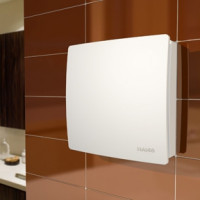 Hood to the bathroom: selection rules and installation features
Hood to the bathroom: selection rules and installation features 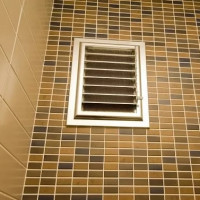 Ventilation in the bathroom and toilet: principle of operation, typical schemes and installation features
Ventilation in the bathroom and toilet: principle of operation, typical schemes and installation features  How to make ventilation in the country: subtleties and rules for installing ventilation of a country house
How to make ventilation in the country: subtleties and rules for installing ventilation of a country house 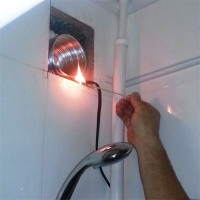 Return draft in ventilation of a private house: why ventilation works in the opposite direction and how to eliminate it
Return draft in ventilation of a private house: why ventilation works in the opposite direction and how to eliminate it 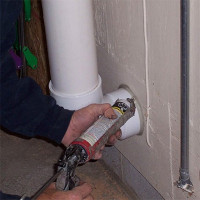 DIY ventilation in the apartment: an overview of the nuances of arranging the ventilation system
DIY ventilation in the apartment: an overview of the nuances of arranging the ventilation system  How much does it cost to connect gas to a private house: the price of organizing gas supply
How much does it cost to connect gas to a private house: the price of organizing gas supply  The best washing machines with dryer: model rating and customer tips
The best washing machines with dryer: model rating and customer tips  What is the color temperature of light and the nuances of choosing the temperature of the lamps to suit your needs
What is the color temperature of light and the nuances of choosing the temperature of the lamps to suit your needs  Replacement of a geyser in an apartment: replacement paperwork + basic norms and requirements
Replacement of a geyser in an apartment: replacement paperwork + basic norms and requirements